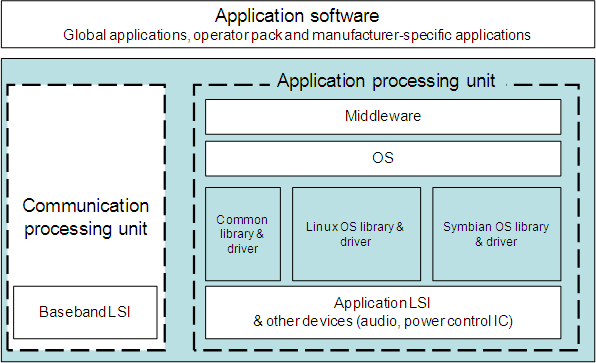NTT DOCOMO is Japan's biggest operator (55 million customers), Renesas is a chipset manufacturer, and Fujitsu, NEC, Panasonic and Sharp are handset manufacturers. Currently the vast majority of NTT DOCOMO's phones run either MOAP-S (based on Symbian, phones from Fujitsu and Sharp) or MOAP-L (based on Linux, phones from Panasonic and NEC).
Here's the description from the press release:
"All six companies will utilize their expertise in mobile phone development based on their respective experiences in using existing platforms for either Symbian or Linux. In particular, the new platform will enable mobile phone manufacturers Fujitsu, NEC, Panasonic Mobile Communications and Sharp to avoid having to develop basic application-processing functions on their own, thereby allowing them to significantly reduce development time and costs and conversely invest more time and resources in the development of manufacturer-specific handset features."
There are relatively few details on the new platform, but the companies have indicated that it will offer 'improved processing speeds for high-quality video and enhanced 3D graphics processing for advanced mobile multimedia functions'.

It easy to see the new platform as 'another mobile OS', but that's not really an accurate description. Rather it is an application platform (or 'overlay'), similar to Samsung's Bada and its aims are akin to what Nokia is ultimately looking to achieve with Qt. The objective is to have a single application platform running on top of both Linux (presumably a evolved version of that underpinning MOAP-L, most likely Limo compliant) and Symbian (time frame would suggest Symbian^4, current developments are on Symbian^2).
There's already a significant portion of commonality in the MOAP platform, but it is clear the intention is to take it much further; for example there will be a single set of global applications that will run across all phones running the platform. This should help cut development costs for the mobile manufacturers and could, potentially, make the platform more attractive in the world wide market.
Symbian will no doubt be pleased that the announcement reaffirms its future position in the Japanese market and gives them a useful, non-Nokia, example of how its operating system is being used. It is a strong endorsement of the technical prowess and ability of the Symbian operating system (or at least its middleware and lower layers).
The first phones running the new platform are scheduled to arrive in the 'second half of the fiscal year ending march 2012' (i.e. late 2011 or early 2012). The grouping is also considering adding compatibility for other operating systems, such as Android.
